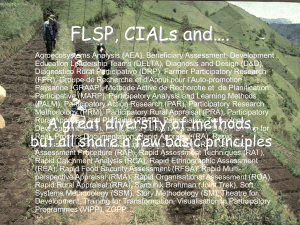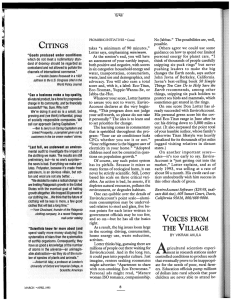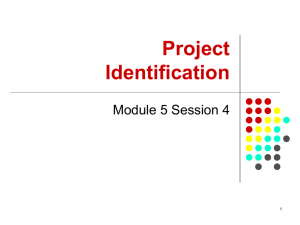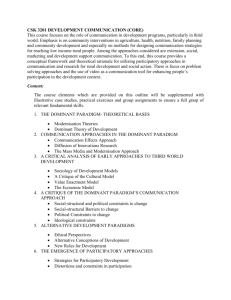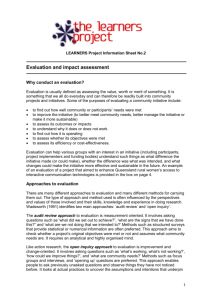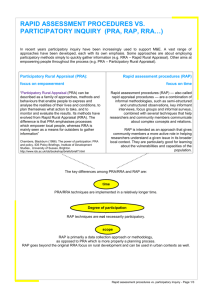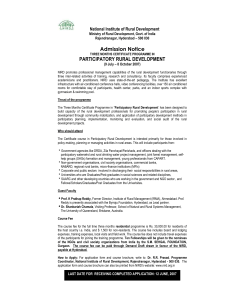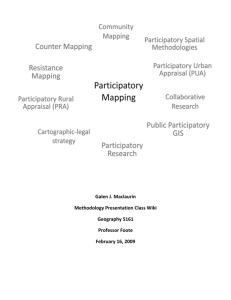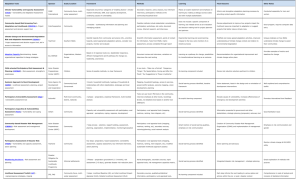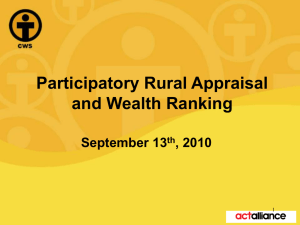PRA participatory rural appraisal methods
advertisement
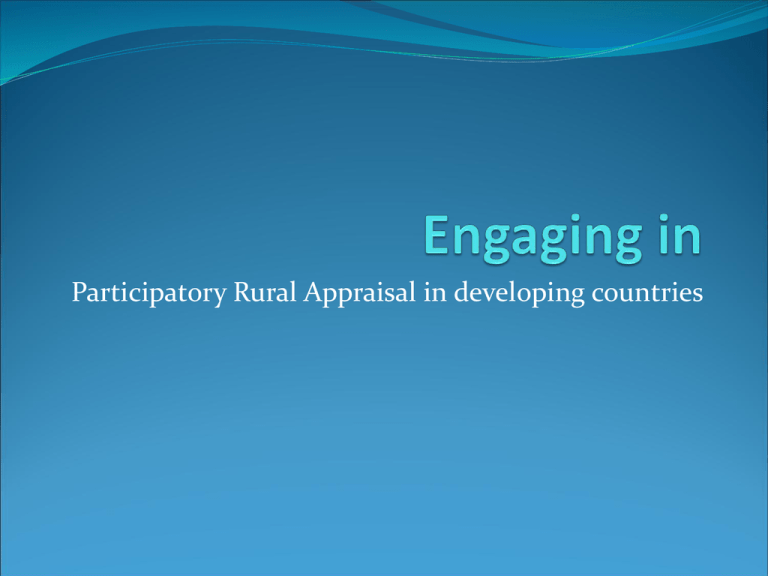
Participatory Rural Appraisal in developing countries Objectives Learn about useful tools for working with low literacy populations in rural areas (developing countries) - Participatory Rural Appraisal tools Stimulate your thinking and creativity for engaging community members in doing participatory needs assessment “The best item to pack for any trip to the developing world or not – is an open mind” Challenges for “outside experts” & students Expect the unexpected (rodents, mosquitoes, street hawking, open markets) Expect poor road conditions No electricity or power failures (your computer loses power…) Lots of people may follow you around (no confidentiality!) Time feels different So how are you going to get your work done? Participatory Rural Appraisal(PRA) Participatory rural appraisal (PRA) An approach (and family of methodologies) for shared learning between local people and outsiders to enable development practitioners, government officials, and local people to plan together appropriate interventions Also known as Participatory Learning and Action (PLA) Key Principles Participation – local people serve as partners in data collection and analysis Flexibility- not a standardized methodology Off-setting biases – anti poverty biases are consciously avoided, more listening less lecturing Teamwork – everyone is involved Diversity – attempts made to identify and analyse contradictions and exceptions “Optimal Ignorance” – leave out unessential details Systematic – to get correct details and conclusions, it is best to cross check Local materials - dirt, stones, sticks (or paper), not computers/electronic devices PRA Techniques Interviewing – Not based on questionnaires but issues (households, individuals, focus groups) Visualization Ranking – a means by which they can rank preferences, problems, wealth Mapping - Community members depicting the physical or social characteristics of their community Social mapping Time lines Impact diagrams Social mapping with rural, low literacy participants Social Mapping A space-related PRA Used to depict the habitation pattern of a particular region Drawn by local people Not drawn to scale but reveals what is believed to be relevant and important to them Time lines with rural, low literacy participants This is a time-related PRA method Allows people use their concept of time Captures the chronology of events as recalled by local people Flexible in terms of the time scale One day, or a lifetime, or history of the community Time line Impact diagrams with rural, low literacy participants A flow diagram , commonly used to identify and depict the image of an activity, intervention or event Takes into account types of changes as perceived by the local people Helps to identify impacts of certain events - planned, unplanned, negative or positive Impact diagram References http://www.eldis.org/manuals/participation.htm http://info.worldbank.org/etools/docs/library/238582/ toolkit.pdf Kumar Somesh. Methods For Community Participation: A Complete Guide for Practitioners. http://www.youtube.com/watch?v=C6MVTCYDQRI http://www.youtube.com/watch?v=TEZpsYLqL6M&fe ature=related Participatory mapping http://www.youtube.com/watch?v=Jqnm1vkbgx0&feat ure=related (36 sec.) http://www.youtube.com/watch?v=4PW9TLDxWzM& feature=related (31 sec.)
